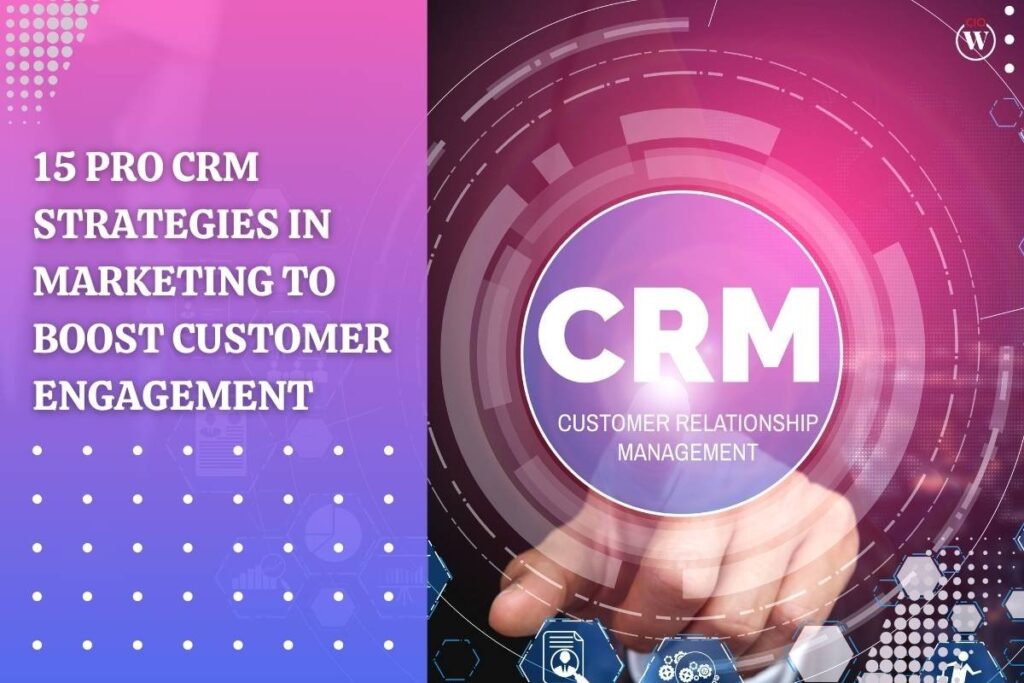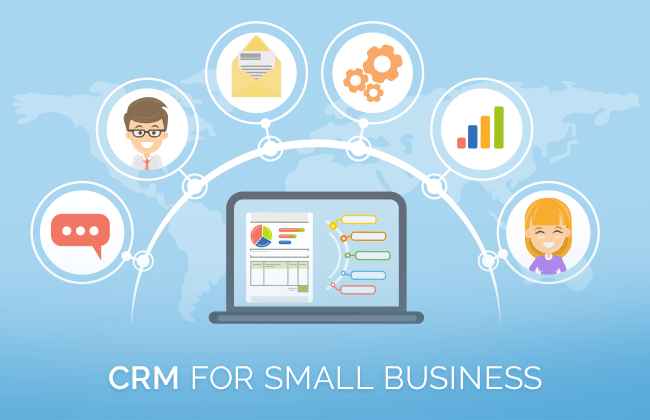
Supercharge Your Business: Unleashing the Power of CRM Marketing Strategies
In today’s fast-paced business environment, staying ahead of the curve requires more than just a great product or service. It demands a deep understanding of your customers and the ability to build meaningful, lasting relationships. That’s where Customer Relationship Management (CRM) marketing strategies come into play. They’re not just a trend; they’re the backbone of successful modern businesses, and this comprehensive guide will show you exactly how to harness their power.
This article will delve deep into the world of CRM marketing, providing you with actionable insights, real-world examples, and a step-by-step approach to transform your marketing efforts. We’ll explore the core principles, the diverse strategies, and the tools you need to not only attract new customers but also nurture existing relationships and drive sustainable growth. Get ready to unlock the full potential of your business!
Understanding the Fundamentals of CRM Marketing
Before we dive into the strategies, let’s get a solid grasp of the fundamentals. CRM marketing is essentially a customer-centric approach that focuses on building and maintaining strong relationships with your customers. It’s about understanding their needs, preferences, and behaviors to deliver personalized experiences that resonate with them. Think of it as treating each customer as an individual rather than a number.
At its core, CRM marketing revolves around the following key elements:
- Customer Data Collection: Gathering information about your customers from various sources, including website interactions, social media engagement, purchase history, and customer service interactions.
- Data Analysis and Segmentation: Analyzing the collected data to identify patterns, trends, and customer segments. This allows you to tailor your marketing messages and offers to specific groups of customers.
- Personalization and Customization: Delivering personalized experiences that cater to individual customer preferences. This can include personalized product recommendations, targeted email campaigns, and customized website content.
- Communication and Engagement: Building meaningful relationships with customers through consistent and relevant communication across multiple channels.
- Customer Feedback and Loyalty: Actively seeking customer feedback to improve your products, services, and overall customer experience. Rewarding loyal customers with exclusive offers and benefits.
By focusing on these elements, you can create a virtuous cycle of customer satisfaction, loyalty, and advocacy, ultimately driving revenue growth and profitability. It’s not just about selling; it’s about building relationships that last.
The Benefits of Implementing CRM Marketing Strategies
Why should you invest your time and resources in CRM marketing? The benefits are numerous and far-reaching, impacting nearly every aspect of your business. Here are some of the most significant advantages:
- Improved Customer Retention: By understanding your customers’ needs and preferences, you can proactively address their pain points and provide exceptional customer service. This leads to increased customer loyalty and a lower churn rate.
- Increased Sales and Revenue: Personalized marketing campaigns and targeted offers can significantly boost sales and revenue. By delivering the right message to the right customer at the right time, you can increase conversion rates and average order value.
- Enhanced Customer Satisfaction: Providing personalized experiences and proactively addressing customer needs leads to higher levels of customer satisfaction. Happy customers are more likely to become repeat buyers and advocates for your brand.
- More Efficient Marketing Campaigns: CRM systems allow you to segment your customer base and target specific groups with tailored marketing messages. This improves the efficiency of your marketing campaigns and reduces wasted resources.
- Improved Customer Service: CRM systems provide customer service representatives with a 360-degree view of each customer, allowing them to provide faster and more effective support.
- Better Decision-Making: CRM systems provide valuable insights into customer behavior and preferences, allowing you to make data-driven decisions about product development, marketing campaigns, and overall business strategy.
- Streamlined Processes: CRM systems can automate many of the repetitive tasks associated with marketing and customer service, freeing up your team to focus on more strategic initiatives.
In short, CRM marketing empowers you to create a customer-centric business that drives growth, builds loyalty, and maximizes profitability. It’s a win-win for both your business and your customers.
Essential CRM Marketing Strategies to Implement
Now that we understand the fundamentals and benefits, let’s dive into the practical strategies you can implement to transform your marketing efforts. These strategies are designed to be adaptable to various business sizes and industries. Remember, the key is to tailor them to your specific customer base and business goals.
1. Customer Segmentation: Know Your Audience
Customer segmentation is the process of dividing your customer base into distinct groups based on shared characteristics, such as demographics, purchase history, behavior, and preferences. This allows you to create more targeted and effective marketing campaigns. Consider the following segmentation types:
- Demographic Segmentation: Grouping customers based on age, gender, income, education, occupation, and other demographic factors.
- Geographic Segmentation: Grouping customers based on location, such as country, region, city, or even neighborhood.
- Behavioral Segmentation: Grouping customers based on their behavior, such as purchase history, website activity, social media engagement, and product usage.
- Psychographic Segmentation: Grouping customers based on their lifestyle, values, attitudes, interests, and personality traits.
Once you’ve segmented your customer base, you can create buyer personas – semi-fictional representations of your ideal customers. These personas will help you understand your customers’ needs, motivations, and pain points, enabling you to create more targeted and personalized marketing messages.
2. Personalized Email Marketing: Crafting Compelling Communications
Email marketing remains one of the most effective channels for reaching and engaging your customers. CRM systems allow you to personalize your email campaigns based on customer segmentation, purchase history, and other data points. Here’s how to make your email marketing shine:
- Personalized Subject Lines: Use the customer’s name or other relevant information in the subject line to grab their attention.
- Targeted Content: Tailor the content of your emails to the specific interests and needs of each customer segment.
- Product Recommendations: Include personalized product recommendations based on the customer’s purchase history or browsing activity.
- Behavioral Triggers: Set up automated email campaigns triggered by specific customer behaviors, such as abandoned carts, website visits, or product inquiries.
- Segmentation-Based Newsletters: Send targeted newsletters to different customer segments with relevant content and offers.
Remember to keep your emails concise, visually appealing, and mobile-friendly. Always include a clear call to action and make it easy for customers to unsubscribe if they wish.
3. Social Media Integration: Engaging on the Platforms Your Customers Love
Social media is a powerful tool for building brand awareness, engaging with customers, and driving sales. Integrate your CRM system with your social media channels to:
- Monitor Social Media Mentions: Track mentions of your brand and respond to customer inquiries and complaints promptly.
- Identify Influencers: Identify and engage with influencers in your industry to promote your products or services.
- Run Targeted Ads: Use your CRM data to target specific customer segments with relevant ads on social media platforms.
- Share Personalized Content: Share content tailored to the interests and preferences of your followers.
- Run Contests and Promotions: Engage your audience with contests, giveaways, and promotions to increase brand awareness and generate leads.
Remember to be authentic, engaging, and responsive on social media. Build relationships with your followers and provide valuable content that resonates with them.
4. Customer Journey Mapping: Understanding the Customer Experience
Customer journey mapping is the process of visualizing the steps a customer takes from initial awareness of your brand to becoming a loyal customer. By mapping out the customer journey, you can identify pain points and opportunities to improve the customer experience. Consider these steps:
- Define Your Customer Personas: Create detailed profiles of your ideal customers.
- Identify Touchpoints: Map out all the touchpoints a customer has with your brand, such as your website, social media, email, and customer service.
- Analyze Customer Behavior: Track how customers interact with your brand at each touchpoint.
- Identify Pain Points: Identify areas where customers experience friction or frustration.
- Optimize the Customer Journey: Make improvements to the customer journey to create a more seamless and positive experience.
A well-optimized customer journey leads to increased customer satisfaction, loyalty, and advocacy.
5. Loyalty Programs: Rewarding Your Best Customers
Loyalty programs are a great way to reward your best customers and encourage repeat business. CRM systems can help you manage and track your loyalty programs. Consider these types of loyalty programs:
- Points-Based Programs: Customers earn points for every purchase, which they can redeem for rewards.
- Tiered Programs: Customers are placed into different tiers based on their spending or engagement, with each tier offering different benefits.
- Subscription Programs: Customers pay a recurring fee for exclusive benefits, such as discounts, free shipping, or early access to new products.
- Referral Programs: Customers earn rewards for referring new customers.
Make sure your loyalty program is easy to understand, rewarding, and aligned with your brand values. Promote your loyalty program across all your marketing channels to encourage customer participation.
6. Automation: Streamlining Your Workflows
CRM systems can automate many of the repetitive tasks associated with marketing and customer service, freeing up your team to focus on more strategic initiatives. Here are some examples of automation:
- Email Marketing Automation: Automate email campaigns based on customer behavior, such as abandoned carts, website visits, or product inquiries.
- Lead Scoring: Automatically score leads based on their engagement with your website, email, and social media.
- Task Automation: Automate tasks such as sending follow-up emails, creating customer service tickets, and updating customer records.
- Workflow Automation: Automate complex workflows, such as the sales process or the customer onboarding process.
Automation can significantly improve your marketing efficiency and productivity. However, it’s important to strike a balance between automation and personalization. Make sure your automated campaigns feel relevant and engaging to your customers.
Choosing the Right CRM Software
Selecting the right CRM software is crucial for the success of your CRM marketing efforts. There are many different CRM systems available, each with its own features, benefits, and pricing. Here’s what to consider when choosing a CRM system:
- Features: Determine which features are essential for your business, such as contact management, sales automation, marketing automation, customer service, and reporting.
- Scalability: Choose a CRM system that can scale with your business as it grows.
- Integration: Ensure the CRM system integrates with your existing tools and systems, such as your website, email marketing platform, and social media channels.
- Ease of Use: Choose a CRM system that is easy to use and navigate.
- Pricing: Consider the pricing structure of different CRM systems and choose one that fits your budget.
- Customer Support: Look for a CRM system that offers excellent customer support.
- Security: Make sure the CRM system has robust security features to protect your customer data.
Some of the most popular CRM systems include Salesforce, HubSpot, Zoho CRM, Microsoft Dynamics 365, and Pipedrive. Research different options and choose the one that best meets your specific needs and requirements. Consider free trials to test out the software before committing.
Measuring and Analyzing Your Results
Implementing CRM marketing strategies is only the first step. You must also measure and analyze your results to determine what’s working and what needs improvement. Here are some key metrics to track:
- Customer Acquisition Cost (CAC): The cost of acquiring a new customer.
- Customer Lifetime Value (CLTV): The predicted revenue a customer will generate over their lifetime.
- Conversion Rate: The percentage of customers who complete a desired action, such as making a purchase or signing up for a newsletter.
- Customer Churn Rate: The percentage of customers who stop doing business with you.
- Customer Satisfaction (CSAT): A measure of customer satisfaction.
- Net Promoter Score (NPS): A measure of customer loyalty and advocacy.
- Return on Investment (ROI): The profitability of your marketing campaigns.
Use your CRM system’s reporting and analytics features to track these metrics and identify areas for improvement. Regularly review your data and make adjustments to your strategies as needed. Continuous monitoring and analysis are essential for optimizing your CRM marketing efforts.
Best Practices for CRM Marketing Success
To maximize your chances of success with CRM marketing, keep these best practices in mind:
- Focus on the Customer: Always put the customer first. Make sure your marketing efforts are focused on their needs and preferences.
- Collect and Use Data Wisely: Gather as much customer data as possible, but always respect customer privacy. Use the data to personalize your marketing messages and offers.
- Be Consistent: Maintain consistent communication with your customers across all channels.
- Be Responsive: Respond to customer inquiries and complaints promptly.
- Be Transparent: Be honest and transparent with your customers.
- Embrace Technology: Use CRM software and other marketing tools to automate your processes and improve efficiency.
- Train Your Team: Provide your team with the training and resources they need to succeed with CRM marketing.
- Stay Up-to-Date: Stay informed about the latest trends and best practices in CRM marketing.
- Continuously Improve: Regularly review your results and make adjustments to your strategies as needed.
By following these best practices, you can create a customer-centric business that drives growth, builds loyalty, and maximizes profitability.
Real-World Examples of Successful CRM Marketing
Let’s look at some real-world examples of how businesses are successfully using CRM marketing strategies:
- Amazon: Amazon is a master of personalized recommendations. They use customer data to suggest products based on purchase history, browsing activity, and other factors. They also use personalized email campaigns to promote products and offers.
- Starbucks: Starbucks uses its loyalty program to reward its best customers. They collect data on customer purchases and preferences to create personalized offers and promotions. They also use their mobile app to provide a seamless customer experience.
- Netflix: Netflix uses customer data to recommend movies and TV shows based on viewing history. They also use personalized email campaigns to promote new content and engage with their subscribers.
- Sephora: Sephora uses its Beauty Insider loyalty program to collect customer data and provide personalized recommendations. They also offer personalized in-store experiences and online tutorials.
These examples demonstrate the power of CRM marketing to drive customer engagement, loyalty, and sales. These companies understand their customers and use data to create personalized experiences that resonate with them.
The Future of CRM Marketing
The future of CRM marketing is bright, with exciting new trends and technologies emerging. Here are some key trends to watch:
- Artificial Intelligence (AI): AI is being used to automate marketing tasks, personalize customer experiences, and predict customer behavior.
- Machine Learning (ML): ML is being used to analyze customer data and identify patterns and trends.
- Hyper-Personalization: Businesses are moving towards hyper-personalization, delivering even more tailored experiences to individual customers.
- Omnichannel Marketing: Businesses are using omnichannel marketing to provide a seamless customer experience across multiple channels.
- Customer Data Platforms (CDPs): CDPs are being used to collect and manage customer data from various sources.
- Privacy and Data Security: With increasing concerns about data privacy, businesses are focusing on protecting customer data and complying with data privacy regulations.
Businesses that embrace these trends will be well-positioned to succeed in the future of CRM marketing. It’s a continuous evolution, and staying informed and adaptable is key.
Conclusion: Embracing the CRM Marketing Revolution
CRM marketing is no longer optional; it’s essential for businesses that want to thrive in today’s competitive landscape. By implementing the strategies and best practices outlined in this guide, you can build strong customer relationships, drive revenue growth, and create a loyal customer base. Remember to focus on your customers, collect and use data wisely, and continuously improve your efforts. The future of your business is in the relationships you build. Embrace the CRM marketing revolution and unlock the full potential of your business!

